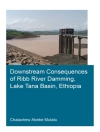The SAGE Handbook of Propaganda unpacks the ever-present and exciting topic of propaganda to explain how it invades the human psyche, in what ways it does so, and in what contexts.
As a beguiling tool of political persuasion in times of war, peace, and uncertainty, propaganda incites people to take, often violent, action, consciously or unconsciously. This pervasive influence is particularly prevalent in world politics and international relations today. In this interdisciplinary Handbook, the editors have gathered together a group of world-class scholars from Europe, America, Asia, and the Middle East, to discuss leadership propaganda, war propaganda, propaganda for peace marketing, propaganda as a psychological tool, terror-enhanced propaganda, and the contemporary topics of internet-mediated propaganda. Unlike previous publications on the subject, this book brings to the forefront current manifestations and processes of propaganda such as Islamist, and Far Right propaganda, from interdisciplinary perspectives.
In its four parts, the Handbook offers researchers and academics of propaganda studies, peace and conflict studies, media and communication studies, political science and governance marketing, as well as intelligence and law enforcement communities, a comprehensive overview of the tools and context of the development and evolution of propaganda from the twentieth century to the present:
Part One: Concepts, Precepts and Techniques in Propaganda Research
Part Two: Methodological Approaches in Propaganda Research
Part Three: Tools and Techniques in Counter-Propaganda Research
Part Four: Propaganda in Context
Inhoudsopgave
Introduction – Paul Baines, Nicholas O′Shaughnessy, & Nancy Snow
Part 01: Concepts, Precepts and Techniques in Propaganda Research
Chapter 1: Propaganda of the Deed and its Anarchist Origins – Neville Bolt
Chapter 2: Atrocity Propaganda in Australia and Great Britain during the First World War – Emily Robertson
Chapter 3: Strategic Narratives and War Propaganda – Thomas Colley
Chapter 4: From Disinformation to Fake News: Forwards into the Past – Nicholas J. O′Shaughnessy
Chapter 5: Post-Truth and the Changing Information Environment – Ignas Kalpokas
Chapter 6: The Audience is the Amplifier: Participatory Propaganda – Alicia Wanless & Michael Berk
Chapter 7: Computational Propaganda and the Rise of the Fake Audience – Aaron Delwiche
Chapter 8: Visual Propaganda and Social Media – Hyunjin Seo
Chapter 9: Public Relations and Corporate Propaganda – Jordi Xifra
Part 02: Methodological Approaches in Propaganda Research
Chapter 10: Rhetorical Methods and Metaphor in Viral Propaganda – Chris Miles
Chapter 11: Content Analysis and the Examination of Digital Propaganda on Social Media – Darren Lilleker & Pawel Surowiec
Chapter 12: Character Assassination as Modus Operandi of Soviet Propaganda – Sergei A. Samoilenko & Margarita Karnysheva
Chapter 13: Assessing Propaganda Effectiveness in North Korea: A Limited Access Case Study – Efe Sevin, Kadir Jun Ayhan, Won Yong Jang, & Hyelim Lee
Chapter 14: Towards the Measurement of Islamist Propaganda Effectiveness: A Marketing Perspective – Paul Baines & Nicholas O′Shaughnessy
Part 03: Tools and Techniques in Counter-Propaganda Research
Chapter 15: Propaganda and Disinformation: How an historical Perspective Aids Critical Response Development – Gill Bennett
Chapter 16: Atrocities, Investigations and Propaganda – Lessons from World War I – Ewan Lawson
Chapter 17: Countering Hamas and Hezbollah Propaganda – Ron Schleifer
Chapter 18: Defending Against Russian Propaganda – Christopher Paul & Miriam Matthews
Chapter 19: Fighting and Framing Fake News – Maria Haigh & Thomas Haigh
Chapter 20: Measuring the Unmeasurable: Evaluating the Effectiveness of US Strategic Counterterrorism Communications – Alberto M. Fernandez
Chapter 21: Countering the Fear in Propaganda – Paul Baines & Nigel Jones
Chapter 22: Peace Marketing as Counter Propaganda? Towards a Methodology – Dianne Dean & Haseeb Shabbir
Part 04: Propaganda in Context
Chapter 23: Propaganda and Information Operations in Southeast Asia: Constructing Colonialism and its Antithesis, Statehood and Peaceful Ambiguity – Alan Chong
Chapter 24: The Construction of the Chinese Dream – Chung-Min Tsai
Chapter 25: Darkness and Light: Media, Propaganda, and Politics in Japan – Nancy Snow
Chapter 26: Syria: Propaganda as a Tool in the Arsenal of Information Warfare – Greg Simons
Chapter 27: Cold War Propaganda in Civil War Greece, 1946-1949: From State of Emergency to Normalization – Zinovia Lialiouti
Chapter 28: Propaganda and Populist Communication in Bolivia, Ecuador and Venezuela – Daniel Aguirre & Caroline Avila
Chapter 29: Evaluating Putin′s Propaganda Performance 2000-2018: Stagecraft as Statecraft – Tina Burrett
Chapter 30: Trumpaganda: The War on Facts, Press and Democracy – Mira Sotirovic
Chapter 31: Leave EU: Dark Money, Dark Ads and Data Crimes – Emma L. Briant
Chapter 32: ISIS Female Recruits: The Alluring Propaganda Promises – Louisa Tarras-Wahlberg
Chapter 33: IS′s Strategic Communication Tactics – Charlie Winter & Craig Whiteside
Chapter 34: The Evolution of Terrorist Propaganda in Cyberspace – Gabriel Weimann
Over de auteur
Nicholas O’Shaughnessy is Professor of Communication at Queen Mary, University of London. He holds degrees from London, Oxford, Columbia and Cambridge Universities. Nicholas’ research focus is on political marketing and propaganda, and he is the author and co-author of numerous journal articles and a Senior Editor of the Journal of Political Marketing. Nicholas is the author of two classic texts in the field of political marketing, The Phenomenon of Political Marketing and Propaganda and Politics: Weapons of Mass Seduction. Nicholas is a Quondam Fellow of Hughes Hall, Cambridge University, and a Fellow of the Royal Society of Arts












